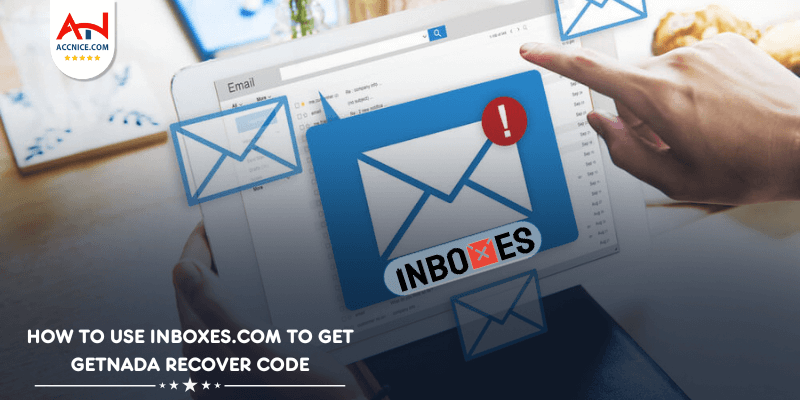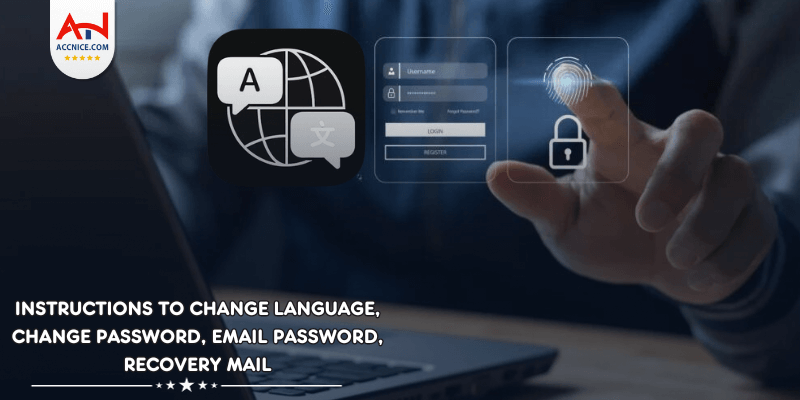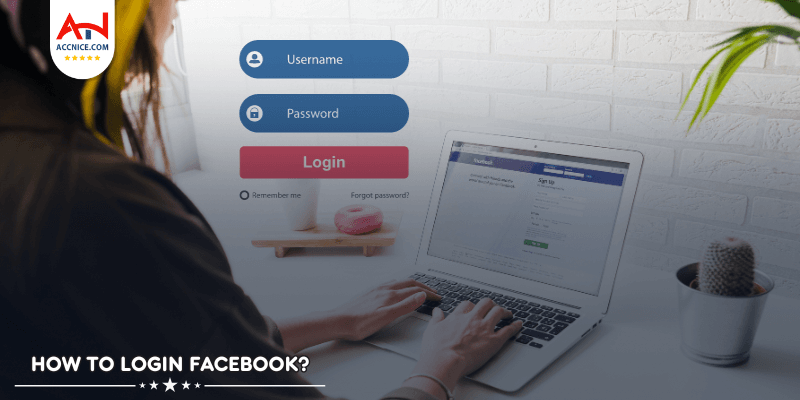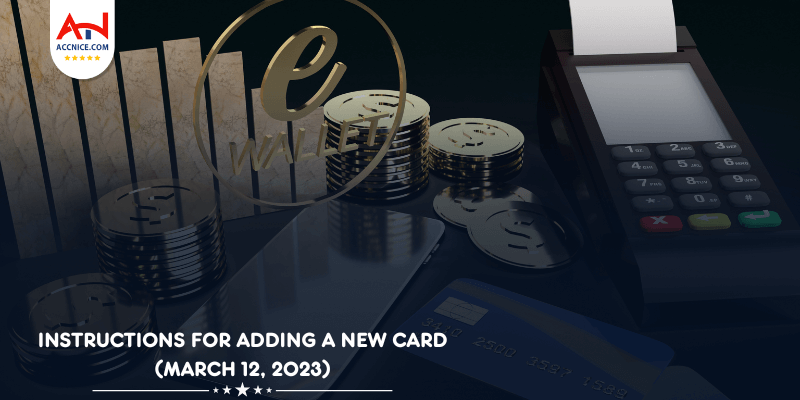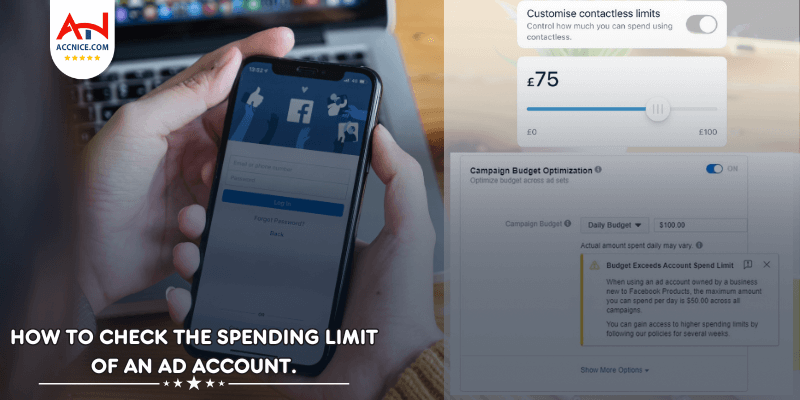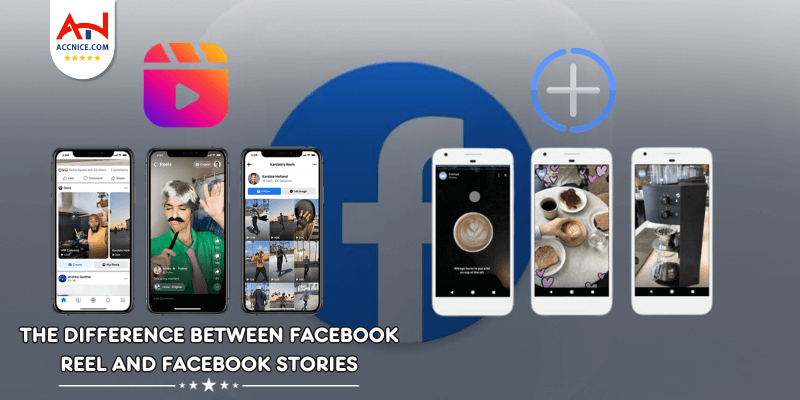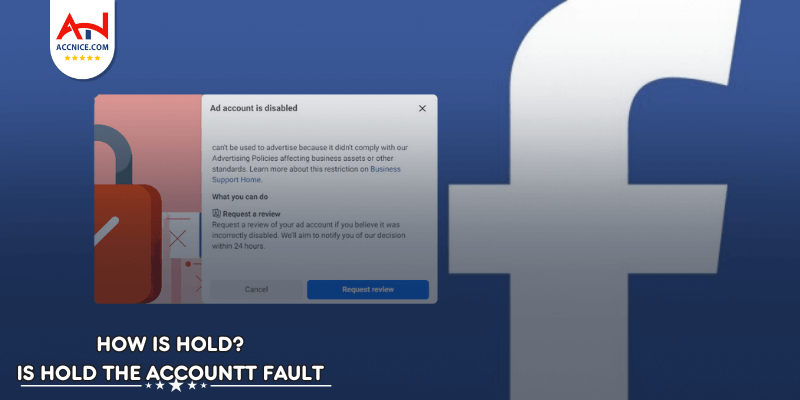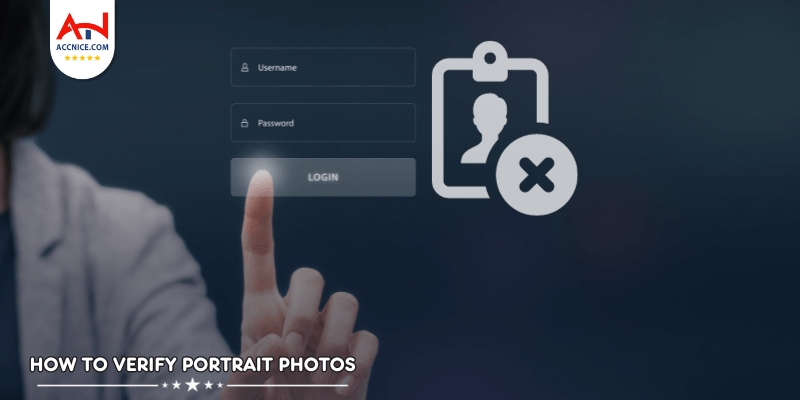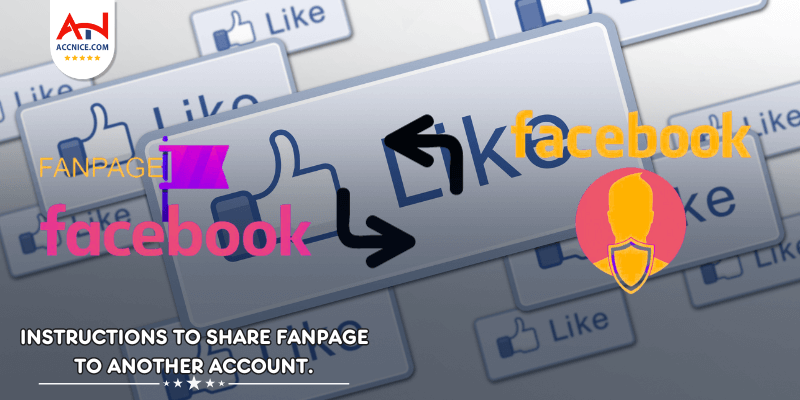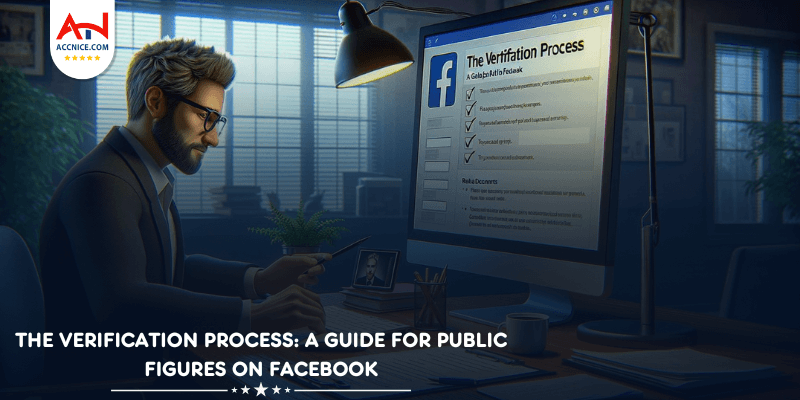
For public figures, getting a blue verified check mark on Facebook is an important milestone that signifies authenticity and trustworthiness. Accnice provides a comprehensive overview of Facebook's verification process, offering step-by-step advice, essential document requirements, and submission tips to help public figures navigate the successful application process. labour.
The Facebook verification process is designed to identify and endorse the authentic accounts of notable public figures, celebrities, brands, and businesses on its platform. The presence of a blue verification tick next to an account name signals to users that the account is recognized for its authenticity and significance within its field. This verification badge not only boosts the account's credibility but also its visibility, making it easier for users to find and follow.

To be considered for verification, an account must meet specific criteria set by Facebook. These criteria ensure that only genuine and significant profiles are awarded the verification badge:
Notability: The account should represent a person, brand, or entity that is well-known and often searched for. This could be determined by media coverage, public interest, and the individual's or entity's impact in their respective field.
Authenticity: The account must genuinely represent a real person, registered business, or entity. Verification requests must be accompanied by official documentation proving the identity of the person or the legitimacy of the business/entity applying for verification.
Uniqueness: Each verified account must be the unique presence of the individual, brand, or entity it claims to represent. Facebook typically verifies only one account per entity, with few exceptions such as accounts for different languages. Fan pages, interest pages, or unofficial pages are not eligible for verification.
Completeness: To qualify for verification, an account must be public and include all necessary information that confirms its authenticity and active status. This includes having a bio, a profile photo, and at least one post. For brands and businesses, linking to an official website can further establish completeness and authenticity.
Application Submission: Eligible accounts can apply for verification through Facebook’s official channels, where they must provide documentation for identity verification (for individuals) or legal registration (for businesses).
Review by Facebook: After submission, Facebook reviews the application against its verification criteria. This review process includes evaluating the account’s notability, authenticity, uniqueness, and completeness.
Decision and Notification: Applicants will receive a notification regarding the approval or rejection of their verification request. The timeframe for this process can vary depending on the volume of applications being processed.
The Facebook verification process is a critical tool for enhancing the authenticity and visibility of significant accounts on the platform. By strictly adhering to its eligibility criteria, Facebook ensures that the blue verification tick remains a reliable indicator of an account’s credibility and notability. For public figures, celebrities, brands, and businesses, achieving verified status can significantly improve their interaction with users, protect against impersonation, and boost their overall presence on the platform.
Preparing your application for Facebook verification is a crucial step in enhancing the credibility and visibility of your account on the platform. A well-prepared application increases your chances of earning the coveted blue verification tick. Here's how to ensure your Facebook profile or page is ready for the verification process:

Profile Completeness: Make sure every section of your profile or page is filled out, including your bio, contact information, and 'About' section. This not only aids in the verification process but also provides potential followers with essential information about who you are or what your business offers.
Visual Identity: Use a clear profile picture and cover photo that accurately represent your brand or personal brand. For individuals, a headshot is ideal. For businesses, use your logo or a visual closely associated with your brand.
Activity: An active presence on Facebook signals that your account is in use and engaging with its audience. Regularly post updates, share content relevant to your field, and interact with your followers to demonstrate ongoing activity.
Identification for Individuals: Prepare a clear, legible copy of a government-issued photo ID that shows your name and date of birth, such as a passport, driver’s license, or national identification card.
Documentation for Businesses: Businesses should have official documents ready that verify their existence and operation. This could include business licenses, tax filings, recent utility bills with the business name and address, or official incorporation documents.
Notability Evidence: Collect links to articles, publications, or public appearances that demonstrate your notability or the public interest in your brand. This could include media coverage, awards, or significant mentions.
Clarify Your Unique Presence: If there are multiple accounts with similar names or purposes, be ready to explain why your account is the unique and authoritative presence for you or your brand on Facebook.
Understand the Criteria: Review Facebook’s official verification criteria thoroughly before applying. This ensures you understand what Facebook looks for in verified accounts and can adjust your application accordingly.
Patience and Timing: The verification process can take time, and not all applications are successful on the first try. If your application is not approved, focus on building your notability and online presence further before reapplying.
Successfully preparing your application for Facebook verification involves more than just filling out a form. It requires ensuring that your profile or page is a complete, active, and authentic representation of you or your brand. By optimizing your profile, gathering necessary documentation, and demonstrating your notability, you increase your chances of achieving verified status. Remember, the blue verification tick is more than a badge—it's a symbol of trust and authenticity that can significantly impact your presence on Facebook.
Applying for the blue verification tick on Facebook is a significant step towards establishing your authenticity and credibility on the platform. While the process is designed to be straightforward, it demands thoroughness to ensure that you meet Facebook's requirements for verification. Here's a step-by-step guide to help you navigate the application process efficiently:
For Pages: Navigate to your Facebook page settings. Look for the “General” section, and you should see an option for “Page Verification” if you're eligible to apply. Click on it to start the verification process.
For Profiles: Go to your profile settings by clicking on the dropdown arrow at the top right of Facebook, then select "Settings & Privacy." Look for a verification request option under your profile settings. The availability of this option can vary based on factors like location and account type.
Account Details: Fill out the form with accurate information about your account. This includes the name of the person or entity the account represents and a link to the Facebook profile or page you're seeking to verify.
Attach Identification or Business Documents: For individual accounts, attach a clear, legible copy of a government-issued photo ID (passport, driver’s license, etc.). For business accounts, attach official documents like a business license, tax filings, or articles of incorporation that clearly show your business’s name and address.
Support Your Notability: Provide links to external sources that demonstrate your account's notability, such as media coverage, public appearances, or official accolades. This evidence should showcase why your account is of public interest and deserves verification.
Review Your Submission: Before submitting your request, double-check all the information and attachments for accuracy and completeness. Ensure that the documents are legible and the provided links are accessible.
Submit: Once you're confident that your application accurately represents your case for verification, submit the request. You'll receive a notification from Facebook acknowledging the receipt of your application.
Wait for the Decision: The review process can take some time, as Facebook thoroughly evaluates each application against its verification criteria. You'll be notified of the decision through notifications on Facebook. If your application is denied, Facebook often allows you to reapply after 30 days, giving you time to address any areas that may have led to the initial rejection.
Applying for Facebook's blue verification tick involves a straightforward process that includes accessing the verification request form, providing necessary details and documentation, and submitting your request for review. Attention to detail and thoroughness in preparing your application can significantly enhance your chances of approval. Whether you're a public figure, a brand, or a business, achieving verified status on Facebook can boost your platform's credibility, improve visibility, and protect against impersonation, underscoring the value of navigating the application process with care and precision.
Successfully navigating the application process for Facebook's blue verification tick requires a blend of preparation, patience, and sometimes, persistence. This badge of authenticity not only enhances your credibility and visibility on the platform but also reinforces your authenticity to your audience. Here are some tips to increase your chances of a successful verification application:

Media Coverage: Demonstrating your notability through media coverage is crucial. Include links to articles, interviews, or public appearances that showcase your influence or contribution to your field. Ensure these sources are reputable and reflect significant public interest in your work.
Official Website: Providing a link to your official website can further establish your authenticity and notability. If applicable, also include links to any professional affiliations or organizations that you're a part of, especially those that underscore your standing in your professional community.
Processing Time: The verification process can vary in length, often taking several weeks. During this time, it's important to be patient and wait for Facebook's response. Keep in mind that Facebook reviews each application thoroughly to ensure that verification is granted to the most deserving accounts.
Appeal if Necessary: If your application is not successful, Facebook typically provides feedback or reasons for the denial. This is your opportunity to appeal the decision. Review the feedback carefully, and if you believe you can provide additional information or clarification that could influence their decision, prepare your appeal accordingly. This might include more recent examples of media coverage, further evidence of public interest, or clarifications regarding your uniqueness and authenticity.
Conclusion
The blue verification tick on Facebook is a testament to an account's authenticity and notability, offering significant benefits in terms of credibility, visibility, and user trust. By carefully preparing your application, showcasing evidence of public interest, and exercising patience throughout the process, you stand a better chance of achieving verified status. Remember, verification is a recognition of your public relevance and impact, and as such, it's worth the effort to demonstrate your eligibility comprehensively. Should your initial application be unsuccessful, consider it a learning opportunity, and use the feedback provided by Facebook to strengthen your appeal. With the right approach and persistence, securing the blue tick and the advantages it brings is within reach.
Don't forget to follow Accnice and tutorial blog to update more interesting content!




